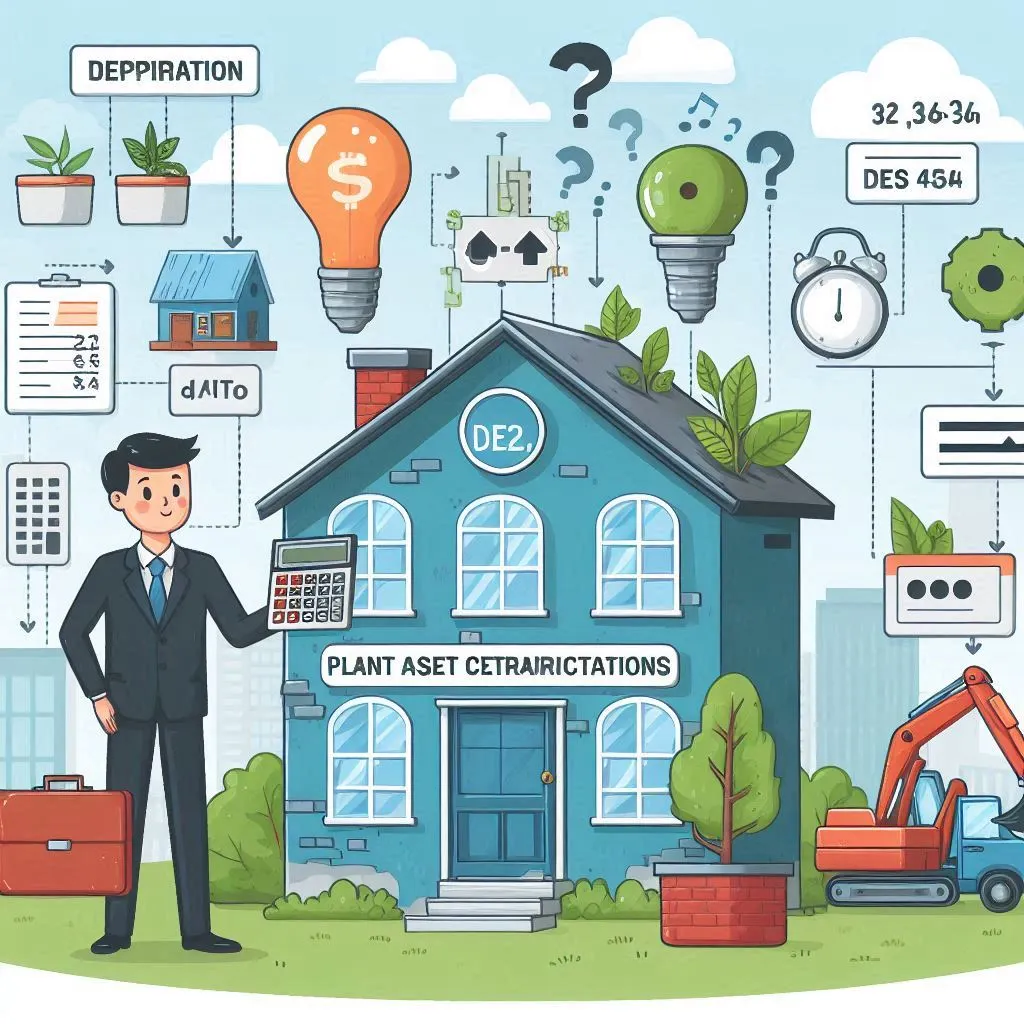Avail Your Offer
Get 10% off on all accounting assignment at www.accountingassignmenthelp.com! Our experts are ready to tackle your accounting challenges and ensure top-notch results. Don't miss out on this limited-time offer to get quality help at a discounted rate. Act now and excel in your accounting studies!
We Accept
- Key Characteristics of Plant Assets
- Depreciation and Applicable Assets
- Factors Affecting Depreciation Calculation
- Depreciation Methods
- Comparing Depreciation Methods
- Tax Considerations and Depreciation Methods
- Revising Depreciation Estimates
- Depreciation Entries
- Categories of Plant Asset Expenditures
- Accounting for Plant Asset Disposal
- Depreciation on Asset Sale
- Subsidiary Ledgers for Plant Assets
- Composite-Rate Depreciation Method
- Leasing vs. Owning Depreciable Plant Assets
- Accounting Treatment of Intangible Assets
- Depletion for Natural Resources
- Conclusion
When managing fixed assets, understanding their characteristics is essential for accurate financial reporting and depreciation calculation. Plant assets, including machinery, buildings, and equipment, play a pivotal role in business operations. Their unique features directly impact how depreciation is calculated, which in turn affects financial statements and tax implications. This blog delves into why the characteristics of plant assets are crucial for calculating depreciation and explores related concepts that are important for accurate asset management.
Plant assets, such as machinery, buildings, and equipment, are long-term tangible items used in business operations. Their physical attributes, like cost, useful life, and residual value, significantly influence how depreciation is computed. Different depreciation methods—such as straight-line, units-of-production, declining-balance, and sum-of-the-years'-digits—reflect varying usage patterns and asset lifecycles. Each method impacts financial statements and tax considerations differently, making it crucial to select the appropriate approach based on the asset’s characteristics.

For students working on fixed assets assignments, grasping these concepts can be challenging. Whether you're tackling a fixed assets assignment or exploring how to manage plant assets effectively, having a clear understanding of these characteristics is key to producing accurate and insightful work. Seeking help with your account assignments can provide the necessary guidance to navigate complex topics, ensuring that you grasp the nuances of depreciation calculations and asset management effectively.
Key Characteristics of Plant Assets
Plant assets are long-term tangible assets used in the production of goods and services. Their primary characteristics include physical substance, utilization in operations, extended useful life, and the application of depreciation. These characteristics dictate how depreciation is calculated, reflecting the asset’s gradual loss of value due to usage and aging.
Depreciation and Applicable Assets
Depreciation is the systematic allocation of the cost of a tangible asset over its useful life. For plant assets, depreciation applies to all tangible items used in production except land. This process ensures that the cost of using the asset is matched with the revenue it generates, providing a clearer financial picture.
Factors Affecting Depreciation Calculation
Several factors affect how depreciation is calculated:
- Asset Cost: This includes the initial purchase price plus any costs incurred to prepare the asset for use.
- Useful Life: The estimated period over which the asset is expected to be productive.
- Residual Value: The asset's estimated value at the end of its useful life.
- Depreciation Method: The chosen method for allocating the asset’s cost over its useful life, which can vary based on the asset's usage pattern and financial strategies.
Depreciation Methods
Straight-Line Method: This method distributes depreciation evenly over the asset's useful life. It provides a consistent expense each year, making budgeting and financial planning straightforward.
- Units-of-Production Method: Depreciation is based on the asset’s usage or production output. This method aligns the expense with the actual wear and tear of the asset, making it suitable for assets with variable usage patterns.
- Declining-Balance Method: An accelerated depreciation method that applies a constant rate to the asset's declining book value. It results in higher depreciation expenses in the earlier years of the asset's life, which can be beneficial for assets that lose value quickly.
- Sum-of-the-Years'-Digits Method: Another accelerated method that allocates more depreciation in the earlier years. This approach is useful for assets that become less efficient over time.
Comparing Depreciation Methods
Choosing the appropriate depreciation method depends on the asset's characteristics and usage. The straight-line method offers simplicity and consistency, suitable for assets with uniform usage. The units-of-production method aligns depreciation with actual use, ideal for variable usage assets. Accelerated methods like declining-balance and sum-of-the-years'-digits are appropriate for assets that depreciate faster.
Tax Considerations and Depreciation Methods
Tax regulations can influence the choice of depreciation methods. Accelerated methods may provide tax benefits by reducing taxable income in the early years of an asset's life, which can enhance cash flow and financial flexibility.
Revising Depreciation Estimates
Depreciation estimates may need revisions due to changes in the asset's useful life, residual value, or usage pattern. Adjustments ensure that depreciation expenses accurately reflect the asset’s current value and operational context.
Depreciation Entries
The journal entry for recording depreciation typically involves debiting Depreciation Expense and crediting Accumulated Depreciation. This entry accounts for the allocation of the asset's cost over its useful life and impacts the company's financial statements.
Categories of Plant Asset Expenditures
Plant asset expenditures fall into two main categories:
- Capital Expenditures: Costs that extend the asset’s useful life or enhance its capacity.
- Revenue Expenditures: Costs incurred to maintain the asset in its current condition.
Proper categorization ensures accurate financial reporting and compliance with accounting standards.
Accounting for Plant Asset Disposal
When disposing of a plant asset, the following steps are taken:
- Remove the asset’s cost and accumulated depreciation from the books.
- Record any proceeds from the sale or other disposals.
- Recognize any gain or loss on the disposal.
This process ensures accurate financial reporting and reflects the true value of the company’s assets.
Depreciation on Asset Sale
When a plant asset is sold, depreciation is calculated up to the date of sale. The asset’s book value (cost minus accumulated depreciation) is compared to the sale proceeds to determine any gain or loss, which is crucial for accurate financial reporting.
Subsidiary Ledgers for Plant Assets
Subsidiary ledgers track individual plant assets, including their cost, accumulated depreciation, and other relevant details. This detailed record-keeping supports effective asset management and financial reporting.
Composite-Rate Depreciation Method
The composite-rate method applies a single rate to a group of similar assets, averaging their depreciation rates. This approach simplifies depreciation calculation for companies with many similar assets.
Leasing vs. Owning Depreciable Plant Assets
Leasing offers flexibility and lower upfront costs compared to owning, which provides control and potential tax benefits. Each option has different financial implications and accounting treatments, influencing asset management decisions.
Accounting Treatment of Intangible Assets
Intangible assets, like patents and copyrights, are amortized over their useful life. Amortization is recorded similarly to depreciation, ensuring accurate financial reporting.
Depletion for Natural Resources
Depletion pertains to the extraction of natural resources, such as minerals or oil. Costs are allocated based on the quantity extracted, ensuring accurate reporting of resource usage and asset value.
Conclusion
Understanding these concepts helps in accurately managing and reporting plant assets and their depreciation. By applying the right methods and adjustments, businesses can maintain clear and compliant financial statements.









